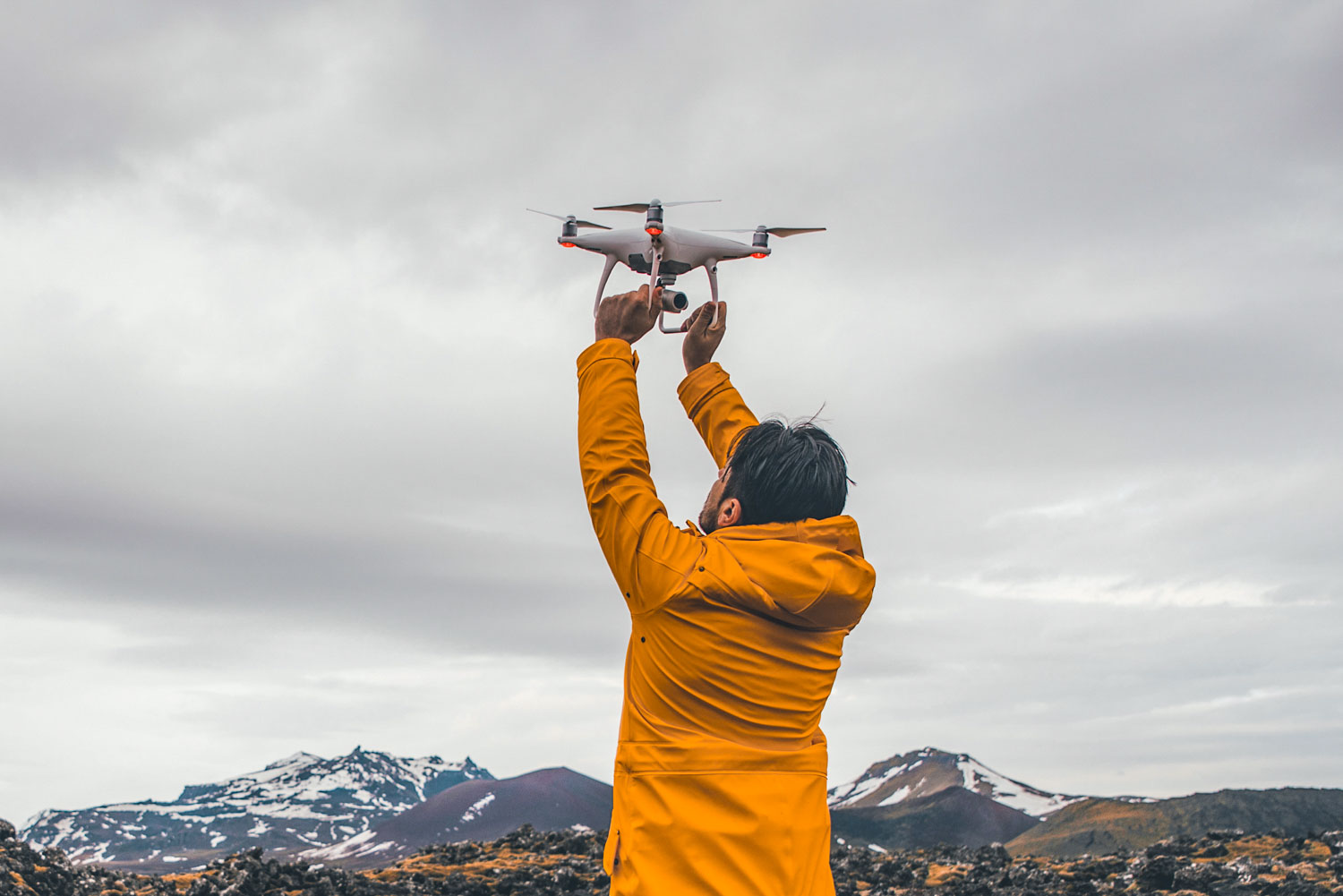Can You Fly Drones in Iceland. With its breathtaking landscapes, volcanic terrain, and unique geological features, Iceland is a dream destination for many travelers and photographers. Unsurprisingly, drones have become increasingly popular for capturing the stunning beauty of this Nordic island nation. However, before you pack your drone and head to Iceland, it’s essential to understand the rules and regulations governing drone flights in this majestic country. This comprehensive guide will explore whether you can fly drones in Iceland, the principles you must follow, and the best practices for responsible drone operation.
Flying Drones in Iceland: The Basics
- Drones in Iceland: A Growing Trend: Drones have gained immense popularity in Iceland thanks to their ability to capture the country’s unique landscapes from a previously unimaginable perspective. Photographers and filmmakers are drawn to Iceland’s rugged coastlines, cascading waterfalls, and otherworldly geothermal areas, making it a prime location for drone enthusiasts. When it comes to finding drones that will fly in sand then Bwine F7MINI Drones will be a good option.
- Legal Framework: In Iceland, drone operations are regulated by the Icelandic Transport Authority (Samgöngustofa), which enforces the rules in Regulation No. 163/2019 on aircraft systems. These regulations align with European Union (EU) rules and ensure safety, protect privacy, and prevent environmental harm.
Can You Fly Drones in Iceland?
The short answer is yes, you can fly drones in Iceland. However, you must follow specific rules and guidelines to ensure your drone flights are legal and safe.
Key Regulations for Flying Drones in Iceland
- Registration: All drones weighing 250 grams (0.55 pounds) or more must be registered with the Icelandic Transport Authority. Registration can be completed online, and you will receive a unique registration number.
- Operational Limitations:
Drones must always be flown within the visual line of sight.
The maximum altitude for drone flights is 120 meters (394 feet) above ground level.
Maintain a minimum horizontal distance of 150 meters (492 feet) from residential, commercial, and recreational areas.
A 50-meter (164-foot) distance from people, vehicles, and vessels not involved in the operation must be maintained.
- Restricted Zones: Certain areas in Iceland are designated as restricted or no-fly zones. These include airports, heliports, and other locations. It’s crucial to consult airspace maps and adhere to restrictions.
- Emergency Services Notification: If you plan to fly a drone within 5 kilometers (3.1 miles) of an airport or heliport, you must notify the airport operator or the Icelandic Transport Authority at least 24 hours in advance.
- Respect for Privacy: Be mindful of people’s privacy and avoid capturing images or videos without their consent, especially in private settings.
- Proximity to Wildlife: Drones should not disturb or approach wildlife, as they can cause stress or harm to animals.
- Insurance: While not mandatory, it’s advisable to have liability insurance covering your drone operations.
Weather Conditions
Iceland’s weather can be unpredictable and harsh. Strong winds, rain, and fog are common, making drone flights challenging and risky. Always check the weather forecast and exercise caution when flying in adverse conditions.
Best Practices for Responsible Drone Operation in Iceland
To ensure a safe and enjoyable drone-flying experience in Iceland, consider these best practices:
- Plan Your Flights: Before taking off, plan your flight route, familiarize yourself with the area, and identify potential hazards or restricted zones.
- Respect Wildlife: Keep a safe distance from wildlife and avoid flying near nesting birds or seals.
- Battery Management: Cold weather can affect battery performance. Keep your drone’s batteries warm, and bring spares if necessary.
- Capture Epic Shots: Iceland’s landscapes offer endless opportunities for stunning aerial photography. Experiment with different angles and lighting to capture the beauty of the country.
- Be Courteous: Respect local residents’ and landowners’ privacy and property. Seek permission if you plan to fly over private property.
FAQS
Do I need a permit to fly drones in Iceland?
No, you do not need a permit to fly drones in Iceland. However, you must follow the regulations outlined by the Icelandic Transport Authority.
Can I fly drones near Iceland’s famous waterfalls?
Yes, you can fly drones near waterfalls, but you must adhere to the altitude and distance restrictions outlined in the regulations. Always prioritize safety and respect the environment.
Are there specific regulations for flying in national parks in Iceland?
National parks in Iceland follow the same regulations as the rest of the country. However, they may have additional guidelines to protect the environment and wildlife. Always check with park authorities before flying.
Can I use my drone to film the Northern Lights in Iceland?
Yes, you can use your drone to capture the Northern Lights, but be aware of the weather conditions and ensure your drone is equipped with low-light or night-flying capabilities for the best results.
Conclusion
Flying drones in Iceland offer a unique opportunity to capture the country’s stunning natural beauty from the sky. While you can fly drones in Iceland, it’s essential to adhere to the regulations outlined by the Icelandic Transport Authority to ensure safety, privacy, and environmental protection. By following the rules, respecting nature, and being considerate of others, you can enjoy the magic of Iceland from a new perspective while contributing to responsible drone operations in this magnificent land.

